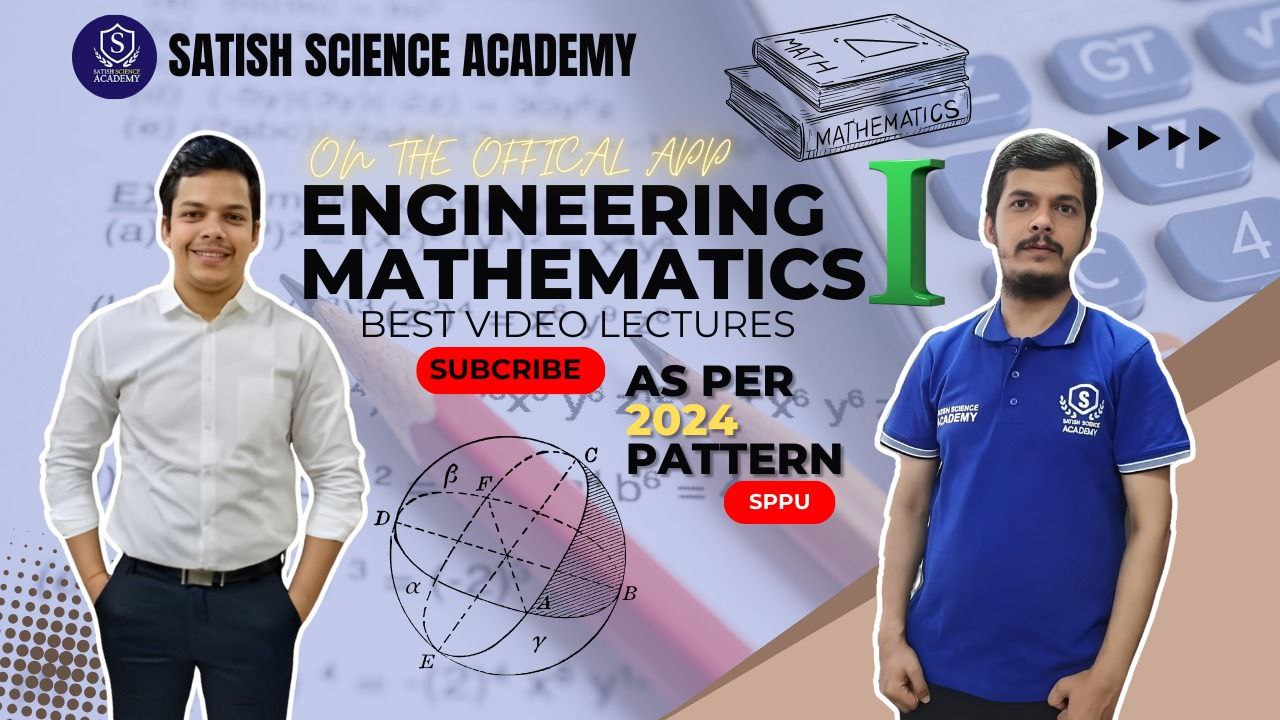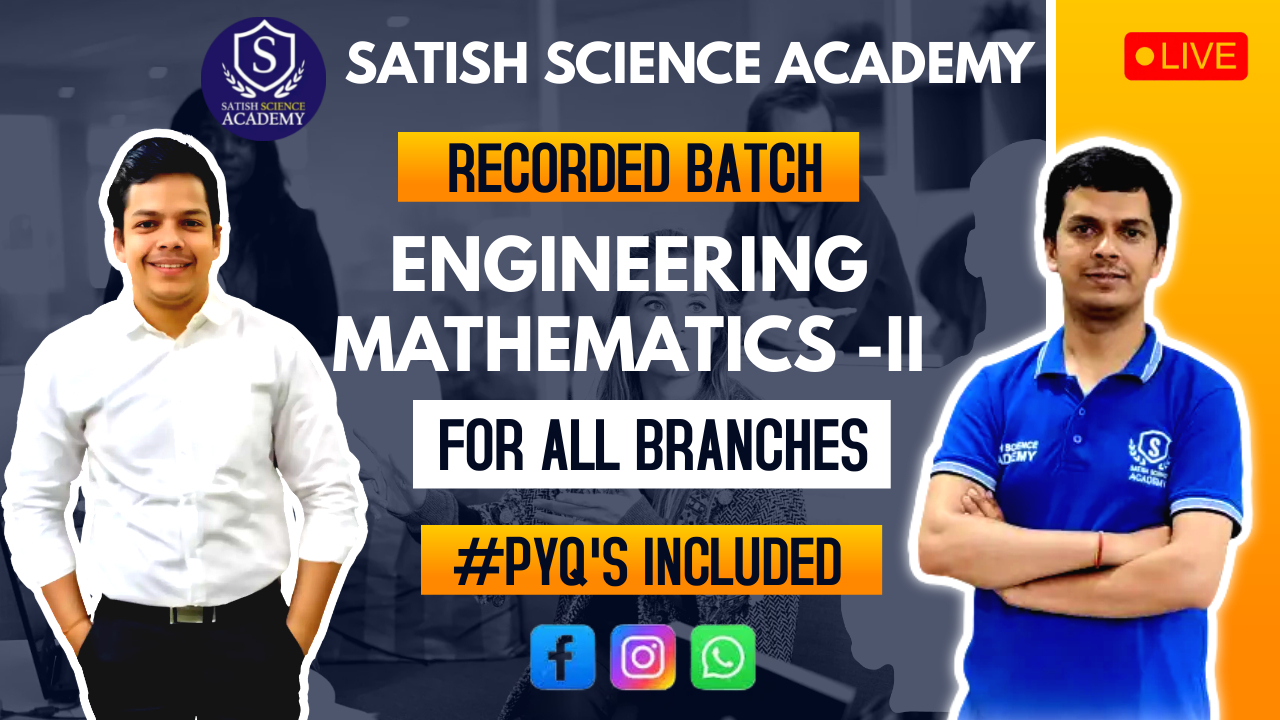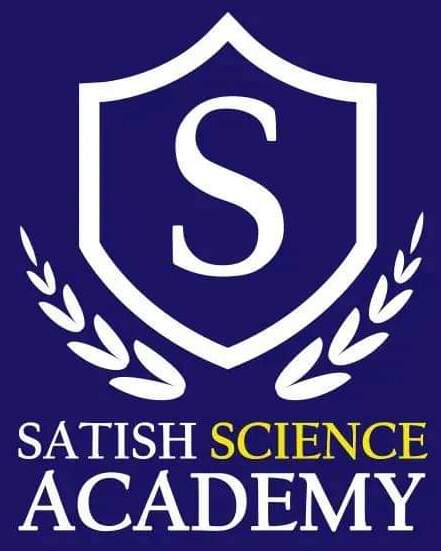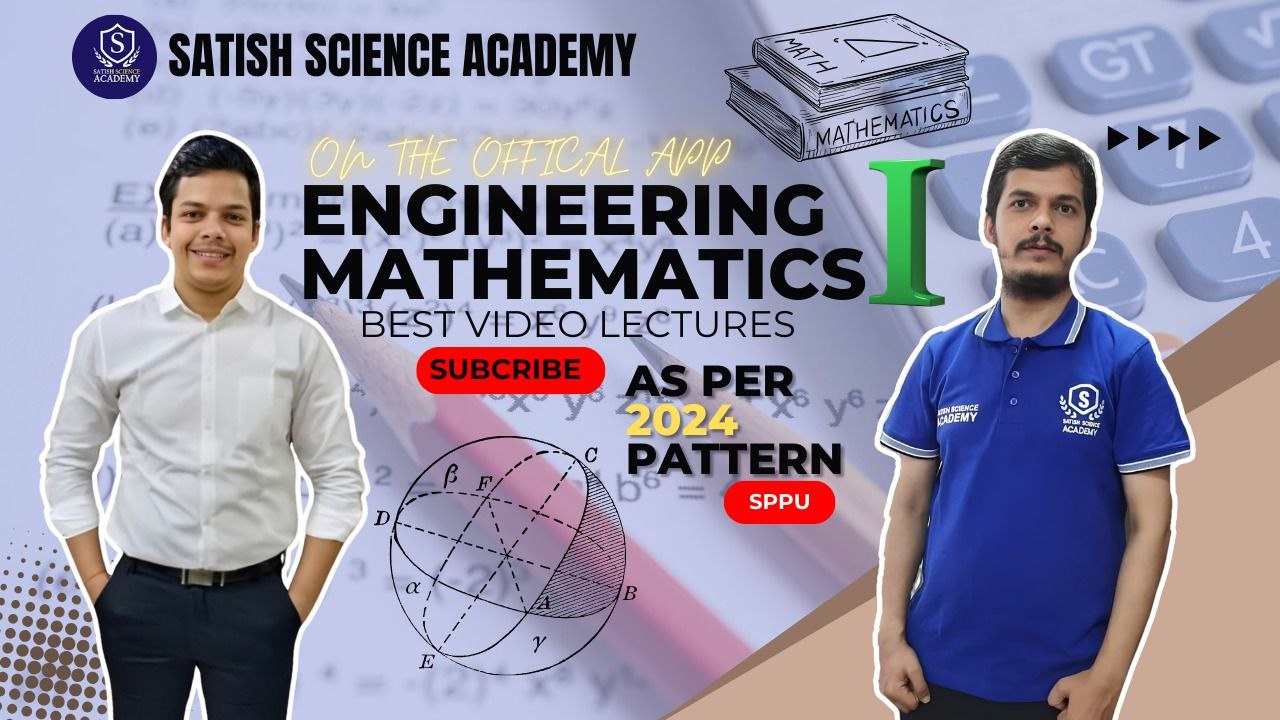Engineering Mathematics Course Online
Mathematics forms the backbone of engineering, providing essential tools for analyzing, designing, and solving real-world problems. An Engineering Mathematics course plays a crucial role in equipping students and professionals with the necessary skills to tackle mathematical challenges across various engineering disciplines. Whether it’s mechanical, civil, electrical, or computer engineering, a strong mathematical foundation is indispensable. The structured approach of an Engineering Mathematics course allows learners to grasp fundamental concepts, which are then applied to more advanced topics, ensuring a solid understanding of problem-solving techniques.
Buy Engineering Mathematics- I Course

DOWNLOAD Mathematics I (2012 Pattern)
Buy Engineering Mathematics- I Course
| MATHEMATICS ENGINEERING | Question Paper |
| MATHEMATICS ENGINEERING | Question Paper |
| MATHEMATICS ENGINEERING | Question Paper |
| MATHEMATICS ENGINEERING | Question Paper |
| MATHEMATICS ENGINEERING | Question Paper |
| MATHEMATICS ENGINEERING | Question Paper |
| MATHEMATICS ENGINEERING | Question Paper |
DOWNLOAD Mathematics I (2015 Pattern)
Buy Engineering Mathematics- I Course
| MATHEMATICS ENGINEERING | Question Paper |
| MATHEMATICS ENGINEERING | Question Paper |
| MATHEMATICS ENGINEERING | Question Paper |
| MATHEMATICS ENGINEERING | Question Paper |
| MATHEMATICS ENGINEERING | Question Paper |
| MATHEMATICS ENGINEERING | Question Paper |
| MATHEMATICS ENGINEERING | Question Paper |
DOWNLOAD Mathematics I (2019 Pattern)
Buy Engineering Mathematics- I Course
| MATHEMATICS ENGINEERING | Question Paper |
| MATHEMATICS ENGINEERING | Question Paper |
| MATHEMATICS ENGINEERING | Question Paper |
| MATHEMATICS ENGINEERING | Question Paper |
| MATHEMATICS ENGINEERING | Question Paper |
| MATHEMATICS ENGINEERING | Question Paper |
| MATHEMATICS ENGINEERING | Question Paper |
| MATHEMATICS ENGINEERING | Question Paper |
| MATHEMATICS ENGINEERING | Question Paper |
DOWNLOAD Mathematics II (2012 Pattern)
Buy Engineering Mathematics- II Course

| MATHEMATICS ENGINEERING | Question Paper |
| MATHEMATICS ENGINEERING | Question Paper |
| MATHEMATICS ENGINEERING | Question Paper |
| MATHEMATICS ENGINEERING | Question Paper |
| MATHEMATICS ENGINEERING | Question Paper |
| MATHEMATICS ENGINEERING | Question Paper |
DOWNLOAD Mathematics II (2015 Pattern)
Buy Engineering Mathematics- II Course
| MATHEMATICS ENGINEERING | Question Paper |
| MATHEMATICS ENGINEERING | Question Paper |
| MATHEMATICS ENGINEERING | Question Paper |
| MATHEMATICS ENGINEERING | Question Paper |
| MATHEMATICS ENGINEERING | Question Paper |
| MATHEMATICS ENGINEERING | Question Paper |
DOWNLOAD Mathematics II (2019 Pattern)
Buy Engineering Mathematics- II Course
| MATHEMATICS ENGINEERING | Question Paper |
| MATHEMATICS ENGINEERING | Question Paper |
| MATHEMATICS ENGINEERING | Question Paper |
| MATHEMATICS ENGINEERING | Question Paper |
| MATHEMATICS ENGINEERING | Question Paper |
| MATHEMATICS ENGINEERING | Question Paper |
| MATHEMATICS ENGINEERING | Question Paper |
DOWNLOAD Mathematics III (2012 Pattern)
Buy Engineering Mathematics- III Course

| MATHEMATICS ENGINEERING | Question Paper |
| MATHEMATICS ENGINEERING | Question Paper |
| MATHEMATICS ENGINEERING | Question Paper |
| MATHEMATICS ENGINEERING | Question Paper |
| MATHEMATICS ENGINEERING | Question Paper |
| MATHEMATICS ENGINEERING | Question Paper |
| MATHEMATICS ENGINEERING | Question Paper |
| MATHEMATICS ENGINEERING | Question Paper |
DOWNLOAD Mathematics III (2015 Pattern)
Buy Engineering Mathematics- III Course
| MATHEMATICS ENGINEERING | Question Paper |
| MATHEMATICS ENGINEERING | Question Paper |
| MATHEMATICS ENGINEERING | Question Paper |
| MATHEMATICS ENGINEERING | Question Paper |
| MATHEMATICS ENGINEERING | Question Paper |
| MATHEMATICS ENGINEERING | Question Paper |
The Engineering Mathematics course covers a wide range of mathematical concepts essential for engineering applications. Engineers frequently use differential equations, matrices, Fourier series, and multiple integrals to model and analyze systems. Without proper mathematical training, understanding these concepts can be overwhelming. Therefore, structured learning through an Engineering Mathematics course becomes necessary to build a step-by-step grasp of these principles.
Buy Engineering Mathematics- II Course
A well-structured Engineering Mathematics course enhances analytical thinking, helping engineers approach problems systematically. Engineering problems are often complex, requiring a strong command of calculus, linear algebra, and differential equations. These mathematical tools allow engineers to develop models, analyze system behavior, and optimize designs efficiently. The Engineering Mathematics course ensures that learners not only understand theoretical concepts but also gain hands-on experience in applying them to practical engineering problems.
Buy Engineering Mathematics- III Course
The Engineering Mathematics course is divided into three levels:
- Engineering Mathematics I: Covers foundational topics like calculus, Fourier series, matrices, and their applications.
- Engineering Mathematics II: Explores differential equations, integral calculus, curve tracing, and multiple integrals.
- Engineering Mathematics III: Focuses on advanced mathematical techniques used in engineering analysis and applications.
Each level of the Engineering Mathematics course builds upon previous knowledge, ensuring a progressive learning experience. The structured format of the Engineering Mathematics course allows students to develop problem-solving skills step by step, making complex concepts easier to grasp.
One of the key reasons to enroll in an Engineering Mathematics course is its relevance in real-world applications. Engineers use mathematical principles to design structures, analyze fluid flow, optimize electrical circuits, and solve mechanical problems. Without a strong mathematical foundation, engineering solutions can lack accuracy and efficiency. The Engineering Mathematics course bridges this gap by providing students with a well-organized curriculum that systematically introduces key mathematical concepts and their applications.
The Engineering Mathematics course also helps professionals stay updated with essential mathematical techniques required in engineering research and industry applications. With evolving technology, engineering challenges are becoming more sophisticated, requiring a deeper understanding of mathematical modeling and computational techniques. A well-structured Engineering Mathematics course ensures that learners remain competent and confident in tackling engineering problems.
Moreover, the Engineering Mathematics course fosters logical reasoning and critical thinking. Engineering problems often require breaking down complex situations into manageable components. This analytical approach, developed through the Engineering Mathematics course, helps engineers identify patterns, optimize solutions, and predict outcomes effectively.
Mastering mathematical concepts through an Engineering Mathematics course also enhances interdisciplinary knowledge. Engineering fields often overlap, requiring mathematical tools applicable across multiple domains. Whether it is signal processing in electronics, structural analysis in civil engineering, or fluid mechanics in mechanical engineering, the principles learned in the Engineering Mathematics course provide a common foundation for various technical fields.
A structured Engineering Mathematics course is also essential for competitive exams and higher education. Engineering entrance exams, postgraduate studies, and professional certifications require a deep understanding of mathematical concepts. By completing an Engineering Mathematics course, students can strengthen their preparation and improve their chances of excelling in exams and research opportunities.
Another benefit of an Engineering Mathematics course is its ability to simplify complex calculations through structured learning. Engineering problems often involve lengthy computations, which can be challenging without a systematic approach. The Engineering Mathematics course introduces efficient problem-solving techniques that reduce complexity and improve accuracy, helping students solve problems with confidence.
Additionally, an Engineering Mathematics course encourages a practical learning approach. Instead of merely focusing on theoretical concepts, students get opportunities to apply their knowledge through problem-solving exercises, case studies, and real-world applications. This hands-on experience enhances learning and makes mathematical concepts more relatable.
The increasing reliance on computational tools in engineering further highlights the importance of an Engineering Mathematics course. Engineers frequently use software for simulations, modeling, and numerical analysis. However, a strong mathematical foundation is necessary to interpret results correctly and make informed decisions. The Engineering Mathematics course equips students with the mathematical knowledge required to work efficiently with engineering software and tools.
Finally, the Engineering Mathematics course prepares students and professionals for research and innovation. Engineers constantly develop new technologies, requiring a deep mathematical foundation to create groundbreaking solutions. Whether it’s designing algorithms, optimizing materials, or developing advanced control systems, the knowledge gained from an Engineering Mathematics course plays a vital role in pushing the boundaries of innovation.
With a clear focus on structured learning and practical applications, the Engineering Mathematics course provides a solid foundation for aspiring engineers and industry professionals. The journey begins with Engineering Mathematics I, which covers fundamental topics that lay the groundwork for more advanced mathematical concepts.
Engineering Mathematics I
Buy Engineering Mathematics- I Course
The first stage of the Engineering Mathematics course, known as Engineering Mathematics I, introduces essential mathematical concepts that form the foundation for advanced studies. This section covers differential calculus, Fourier series, partial differentiation, and linear algebra. These topics play a crucial role in engineering applications such as structural analysis, electrical circuit design, and mechanical system modeling. By mastering the concepts in Engineering Mathematics I, students develop the analytical skills required to tackle complex engineering challenges.
Unit I: Differential Calculus
Differential calculus is one of the fundamental areas of mathematics used extensively in engineering. It deals with the study of rates of change and slopes of curves, which are critical in fields such as fluid mechanics, control systems, and optimization problems.
One of the key theorems in this unit is Rolle’s Theorem, which states that if a function is continuous and differentiable on a closed interval, and if the function values at the endpoints are equal, then there exists at least one point in the interval where the derivative is zero. This concept is essential in understanding critical points in engineering designs.
Similarly, Mean Value Theorems extend this idea by demonstrating that there is at least one point in a given interval where the instantaneous rate of change equals the average rate of change. These theorems form the foundation for solving engineering problems related to velocity, acceleration, and other rate-dependent processes.
Another significant topic is Taylor’s and Maclaurin’s Series, which help approximate complex functions using polynomial expressions. Engineers frequently use these series expansions for computational approximations in scenarios where direct calculations are difficult. Understanding these expansions is particularly useful in numerical methods, where engineers need to approximate values with high precision.
Additionally, indeterminate forms and L’Hôpital’s Rule allow engineers to evaluate limits involving undefined expressions like 0/0 or ∞/∞. This concept is widely applied in thermodynamics, signal processing, and fluid dynamics, where precise calculations are necessary.
Unit II: Fourier Series
The Fourier Series is a powerful mathematical tool used in signal processing, vibration analysis, and heat conduction problems. It allows engineers to represent periodic functions as infinite sums of sine and cosine terms, making it possible to analyze complex waveforms and oscillations.
For a function to be expressed as a Fourier Series, it must satisfy Dirichlet’s conditions, which ensure the function is integrable and has a finite number of discontinuities. The two common types of Fourier Series representations are full-range Fourier Series, which define functions over the entire real line, and half-range Fourier Series, which focus on functions defined over a limited domain.
One of the practical applications of the Fourier Series is harmonic analysis, where engineers break down complex waveforms into fundamental components. This technique is widely used in electrical engineering for analyzing AC circuits, signal modulation, and image processing.
Another essential concept is Parseval’s Identity, which relates the total energy of a function to the sum of the squares of its Fourier coefficients. This identity plays a significant role in power signal analysis and communication systems.
Unit III: Partial Differentiation
Engineering problems often involve functions with multiple independent variables. Partial differentiation extends the concept of differentiation to such functions, allowing engineers to study how a function changes with respect to one variable while keeping others constant.
An important result in this unit is Euler’s Theorem on Homogeneous Functions, which helps engineers simplify complex functions by expressing them in a specific form. This theorem is widely used in thermodynamics and economics for solving optimization problems.
Other key concepts include total derivatives, which account for changes in all variables simultaneously, and changing independent variables, which enables engineers to transform equations for easier computation.
Unit IV: Applications of Partial Differentiation
Partial differentiation has several real-world applications in engineering. One critical topic is the Jacobian determinant, which measures how a function transforms when switching coordinate systems. This concept is essential in robotics, where transformations between different coordinate frames are necessary for motion planning.
Another important application is error approximation, where engineers use partial derivatives to estimate small variations in system parameters. This method is widely applied in quality control and precision manufacturing.
Finding maxima and minima of functions is another crucial topic. Engineers often need to determine the optimal conditions for design parameters, such as minimizing energy consumption or maximizing structural efficiency. Lagrange’s method of undetermined multipliers is a powerful optimization technique that helps solve such constrained problems.
Unit V: Linear Algebra – Matrices and System of Linear Equations
Linear algebra is a fundamental topic in engineering, particularly in areas like structural analysis, control systems, and machine learning. Matrices provide a systematic way to represent and solve complex systems of equations.
A crucial concept in this unit is the rank of a matrix, which determines the number of independent equations in a system. Engineers use this property to analyze electrical circuits, mechanical systems, and fluid flow models.
Other important topics include linear dependence and independence, which help in determining whether a set of vectors can be expressed in terms of others. This concept is widely used in signal processing, where engineers need to analyze basis functions in data representation.
Linear and orthogonal transformations play a significant role in engineering applications such as computer graphics, image processing, and structural mechanics. These transformations allow engineers to manipulate coordinate systems and optimize design structures.
Unit VI: Eigenvalues, Eigenvectors, and Diagonalization
Eigenvalues and eigenvectors are essential in many engineering applications, including vibration analysis, stability analysis, and control systems. The eigenvalue problem helps engineers study how systems behave under different conditions.
The Cayley-Hamilton Theorem states that every square matrix satisfies its characteristic equation. Engineers use this theorem to simplify matrix calculations in structural analysis, where the stiffness matrix of a structure must be analyzed for stability.
Another key topic is diagonalization, which involves transforming a matrix into a diagonal form to simplify computations. This technique is particularly useful in solving differential equations and stability analysis problems.
Finally, reducing quadratic forms allows engineers to analyze conic sections and optimize design parameters in mechanical and civil engineering applications.
Engineering Mathematics II
Buy Engineering Mathematics- II Course
The second stage of the Engineering Mathematics course, known as Engineering Mathematics II, builds upon the concepts covered in the first level. This section introduces differential equations, integral calculus, curve tracing, solid geometry, and multiple integrals. These topics are crucial for engineering applications, such as mechanical system modeling, electrical circuit analysis, and structural design. By completing Engineering Mathematics II, students develop the skills necessary to handle complex mathematical problems in various engineering fields.
Unit I: First-Order Ordinary Differential Equations
Differential equations are an essential part of engineering as they describe how physical systems change over time. In Engineering Mathematics II, students begin by studying exact differential equations, which can be solved directly by integration. Understanding these equations is critical in engineering fields such as thermodynamics and electrical circuits.
Another key topic is equations reducible to exact form, which allows engineers to solve non-exact differential equations by transforming them into a solvable structure. This technique is widely used in mechanical and civil engineering applications.
Additionally, the linear differential equation of first order and Bernoulli’s equation are studied in depth. These equations model numerous engineering problems, including population growth, chemical reactions, and electrical circuit behavior.
Unit II: Applications of Differential Equations
The real-world applications of differential equations in engineering are extensive. One significant application is orthogonal trajectories, which describe curves that intersect a given family of curves at right angles. This concept is useful in electromagnetic field analysis and heat conduction problems.
Newton’s Law of Cooling is another important application, which explains how the temperature of an object changes over time. Engineers use this principle in designing heat exchangers, refrigeration systems, and thermal insulation.
In electrical engineering, Kirchhoff’s Law relies on differential equations to analyze complex electrical circuits. Engineers use this law to determine current and voltage in interconnected circuit components.
Other practical applications include modeling rectilinear motion and simple harmonic motion. These concepts are vital in mechanical engineering for designing suspension systems, pendulums, and oscillating structures.
Unit III: Integral Calculus
Integral calculus plays a crucial role in Engineering Mathematics II, allowing engineers to compute areas, volumes, and other quantities. One key topic is reduction formulae, which simplify the evaluation of integrals involving trigonometric, exponential, and logarithmic functions. These formulas are essential for solving engineering problems involving wave motion, signal processing, and fluid dynamics.
Another essential concept is the Beta and Gamma functions, which extend the concept of factorial to continuous values. Engineers use these functions in probability theory, statistical analysis, and complex engineering calculations.
Additionally, differentiation under the integral sign provides a powerful technique for solving integrals involving multiple variables. This method is widely applied in physics, particularly in electromagnetism and quantum mechanics.
The error function is another important topic, commonly used in probability and statistical analysis to study normal distribution and signal processing applications.
Unit IV: Curve Tracing
Curve tracing helps engineers analyze the shape and behavior of mathematical curves. Engineers study curves in different coordinate systems, including Cartesian, polar, and parametric forms. These representations are crucial in computer-aided design (CAD), structural engineering, and robotics.
Another important topic is rectification of curves, which involves determining the length of a curve. This concept is essential in mechanical engineering for calculating gear profiles and aerodynamic shapes.
Understanding curve behavior allows engineers to optimize designs, ensuring efficiency and stability in various engineering applications.
Unit V: Solid Geometry
Solid geometry plays an essential role in engineering design and structural analysis. Engineers frequently use different coordinate systems, including Cartesian, spherical polar, and cylindrical coordinate systems, to describe three-dimensional objects.
A key topic in this unit is the equation of a sphere, which is crucial in fields such as geophysics, astronomy, and mechanical design. Engineers use these equations to model planetary motion, satellite orbits, and structural domes.
Another fundamental concept is the equation of a cone, which is used in civil engineering for designing cooling towers, funnels, and structural reinforcements.
The equation of a cylinder is also covered, as cylindrical structures are common in pipelines, storage tanks, and pressure vessels. Understanding these equations allows engineers to optimize designs for strength, efficiency, and cost-effectiveness.
Unit VI: Multiple Integrals and Their Applications
Multiple integrals are extensively used in engineering to compute areas, volumes, mass, and other physical quantities. Engineers study double and triple integrals, which allow them to evaluate multidimensional functions and solve real-world problems in fluid dynamics, structural mechanics, and electromagnetism.
An important concept in this unit is the change of order in integration, which simplifies the evaluation of double integrals by switching the order of integration. This technique is widely applied in heat transfer, fluid flow analysis, and electromagnetic field calculations.
Multiple integrals are also used in calculating center of gravity, moment of inertia, and mass distribution. These concepts are fundamental in structural engineering, where engineers analyze the stability and load distribution of bridges, buildings, and vehicles.
Buy Engineering Mathematics- III Course
Why Choose Satish Science Academy?
The Engineering Mathematics course offered by Satish Science Academy is designed to help students and professionals develop a strong foundation in mathematical concepts essential for engineering applications. The structured approach ensures that learners not only grasp theoretical concepts but also apply them to real-world engineering challenges.

Quality Content
The Engineering Mathematics course provides well-structured and detailed lessons that cover fundamental and advanced topics in a logical sequence. Each concept is explained with clarity, ensuring that learners can follow along without confusion.
Instead of simply presenting formulas, the course delves into their derivations and applications. This method strengthens problem-solving skills and enhances mathematical reasoning. Every topic, from differential equations to multiple integrals, is covered comprehensively to meet academic and professional needs.
Expert Instruction
Engineering mathematics can be challenging, but the right instruction makes all the difference. The instructors at Satish Science Academy break down complex topics into easily understandable explanations, guiding students step by step. Their expertise ensures that learners gain confidence in tackling mathematical problems relevant to engineering fields.
Additionally, practical examples and real-world applications are integrated into the lessons. This approach helps students see the connection between mathematical theories and engineering challenges, making the learning process engaging and meaningful.
Real-World Applications
Mathematics is not just about solving equations; it is the backbone of engineering problem-solving. The Engineering Mathematics course emphasizes real-world applications, demonstrating how mathematical concepts are used in structural engineering, electrical circuits, fluid dynamics, thermodynamics, and more.
For example, differential equations play a crucial role in modeling mechanical vibrations, heat conduction, and electrical circuit behavior. Fourier Series is essential in signal processing, and multiple integrals help engineers calculate mass, center of gravity, and moment of inertia. These applications make mathematics more relevant and practical for learners.
Flexible Learning
One of the key advantages of enrolling in the Engineering Mathematics course at Satish Science Academy is the flexibility it offers. The pre-recorded course format allows learners to study at their own pace, making it ideal for students balancing academics and professionals managing work commitments.
Whether revisiting complex topics or progressing through new concepts, learners have complete control over their study schedule. This flexibility ensures that students can build a strong mathematical foundation without time constraints.
Strong Foundation for Engineering
Mathematics is fundamental to all engineering disciplines, and a strong foundation leads to better analytical and problem-solving skills. The Engineering Mathematics course at Satish Science Academy is designed to equip learners with the necessary tools to excel in their respective fields.
By covering essential topics such as differential calculus, Fourier Series, integral calculus, and solid geometry, the course prepares students for advanced engineering studies at India’s top universities such as SPPU, GTU, BATU, AKTU, Kolhrapur University, Mumbai University, VIT Vellore, Thapar University, Jadavpur University, and SRM Institute of Science and Technology, Birla Institute of Technology And Science, Amrita Vishwa Vidyapeetham, Lovely Professional University, Amity University and other leading university. It provides the mathematical skills needed for research, design, and innovation in various engineering industries.






